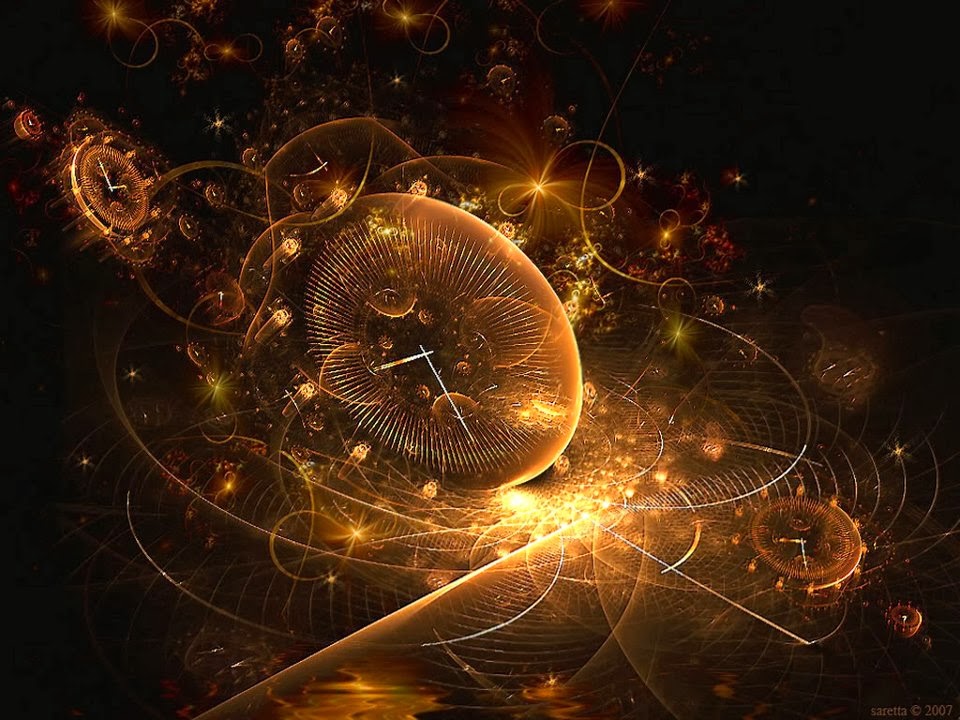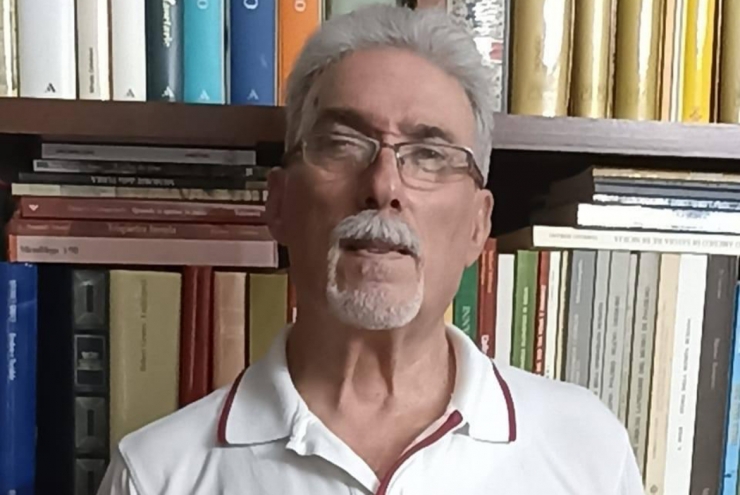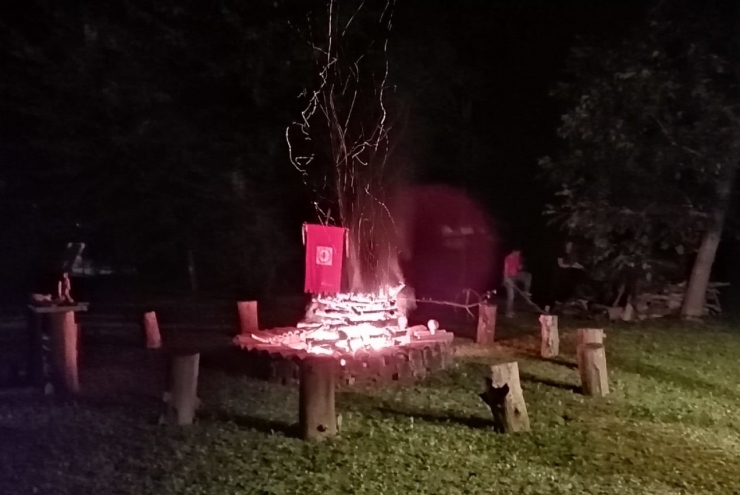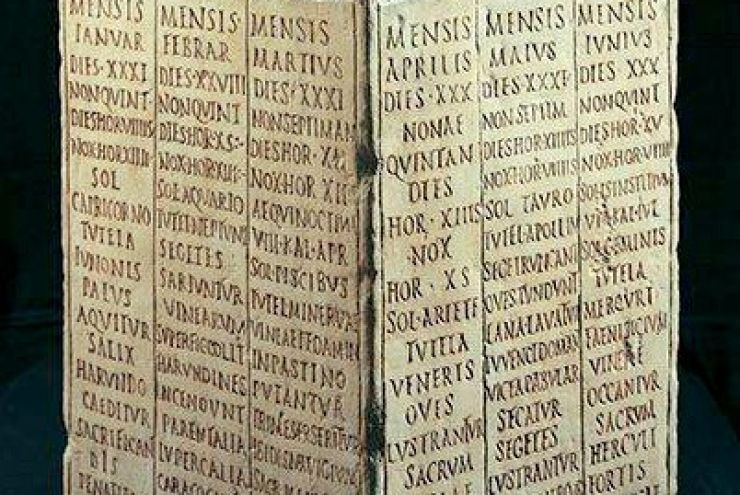 “I have studied more than you”: this is, in a nutshell, the recurring point of today’s disputes over Religio. I have seen it a thousand times in a thousand ways, in the academic sphere, between associations, among people. However, we should note that this characteristic is present only today, as it is not evident that in ancient times there was this attitude of morbid attachment to the theoretical knowledge of religion. This leads to the paradox that at some point the cognitive effort that we make to approach the original practice, in reality, moves us away from the authentic attitude that the religious people of the past had.
“I have studied more than you”: this is, in a nutshell, the recurring point of today’s disputes over Religio. I have seen it a thousand times in a thousand ways, in the academic sphere, between associations, among people. However, we should note that this characteristic is present only today, as it is not evident that in ancient times there was this attitude of morbid attachment to the theoretical knowledge of religion. This leads to the paradox that at some point the cognitive effort that we make to approach the original practice, in reality, moves us away from the authentic attitude that the religious people of the past had.
If we consider for a moment our situation and our times, we understand that there are at least three factors at the origin of our cultural approach.
First factor. Generally, we polytheists of the 21st century belong to a first generation that rebelled against the Christian religion, which, at least in Italy, was the official State religion until 1984, even if it continues today to exert a political pressure on politics. Not everyone is able to break with the religion taught by grandparents and parents and imposed by the school system and society in general. Even when I served my country in the army, I was continuously exposed to Catholic priests and nuns, crucified Christs, and statues of the Virgin. We needed to be determined and have a good knowledge to counter the many questions that the surrounding world was posing when we detached from Christianity. Consequently, our first generation of polytheists is mainly composed of prepared people: people who read, study and get informed. It is rare to meet among us a “non-practicing polytheist”, someone born polytheist but with disinterest in the temples. We are a group united by the culture that has freed us from the scarecrow of eternal Christian damnation and has shown us the ways of Janus. We are an informed and active minority, with a good dose of cultural antibodies.
Second factor. We are the first polytheist generation after centuries of persecution and oblivion. One of the church’s worst accusations, even between opposing factions of Christianity, was and still is that of “paganism”. Christianity has transformed our Gods into evil devils and has transformed the polytheistic garden of the classical world into an arid desert. Our religion, its sacred writings, its temples, its statues, its rites, can be reborn only by digging and unearthing the ancient buildings, then rebuilding the new ones in a consonant way. If we do not follow this approach, we risk to lose our specificity and to water down our identity with a generic New Age polytheism. Besides, according to Neoplatonic philosophers, we risk also the exposure to chaotic demons, by a wrong approach to the divine dimension.
Third factor. We are children of our time and we need evidence and evidence. Archeology is a sophisticated science that relies on the interdisciplinary of various advanced technologies. Our way of thinking is precise, logical, and rational. If the source is not clear, we prefer not to lose weight and be cautious in statements about rituals and Religio. As much as we can try to deny it, we are children of our time, of the rationality of our days, of technology and of research.
In summary, the lack of an uninterrupted tradition forces us to reconstruct something lost, but this must be done with the help of modern research on the ancient world.
Let us face it: we are a first generation whose parents have not taught anything about the Roman Religion. We are passionate on every stone and base our practice on archeology, having great hopes that one day a papyrus will come to the surface bearing important lost details about religious practice. Beyond this, we are hostile to innovations for a sense of tradition and for a sacrosanct prudence.
However, is this the way of the Gods? An experiment of archaeological reconstruction?
Well, first we need to remove the forced scientific objectification of every problem from our minds. The deities that inhabit the cosmos at every level are not the object of the Roman Religion. They are the subject. Moreover, as a subject, they direct the action that we are responsible for recognizing. This consideration opens up new perspectives, as it forces us to confront the divine dimension, not only as informed people who can speak on the subject, that is theologians, but as theurgists.
Julian the Chaldean or his son introduced the term “theurgist” in the frame of the Chaldean Oracles, as one who evokes and acts on the Gods. Porphyry, the first Neoplatonic philosopher to support the nascent theurgy as a method to approach the Gods, wonders in the “Letter to Anebo” if the Gods are forced by the theurgist to manifest themselves and to perform certain actions. In reality, this vision is still affected by ancient magical practices, classified as Goetia, where the invoked demon is forced to perform a certain action by the magician, as shown by the Greek Magic Papyri. The philosopher Iamblichus replied anonymously to the Letter to Anebo of Porphyry, clarifying that it is the theurge who rises to the divinity for a process of “sympathy”, and not the divinity to lower himself to the human beings. With Porphyry, the theurgy began its journey and refined until it reached its maximum expression in Proclus. During the Renaissance, the theurgy re-emerged thanks to the Neoplatonic Circle of Florence, to continue until today in some restricted circles, even if deeply de-contextualized.
Theurgy has been defined as “white magic”, according to a distinction from “black magic” related to goetia. Substantially, black magic is practiced to receive immediate and earthly benefits through the invocation of demonic entities. Porfirio warns about the dangers of black magic, which plays on the volitive and low energies of the soul, exposing them to the whims of demons. Theurgy, more than a magical practice, is a form of Western yoga, as it aims at raising the soul to higher states, closer to the invoked divinity. The theurgist does not try to change the daily reality with theurgy (therefore he is not a magician), but he seeks the divine intuition through the Nous, to come closer to the Gods and to interpret the will in favor of his soul and the community. As we can understand, it is a mystical purpose that has nothing to do with the love filters of goetic practice, which points to the material needs and the earthly desires of the practitioner.
Historically, theurgic practice arose in a period of strong contrast with the nascent Christianity and has a strictly conservative character, with a proposal of rituals in the context of traditional polytheism, seeking contact with the deities. Theurgic rituals can broadly be divided into two subgroups: the telestial practices and the theophorics. The first, also called symbolic, take place through the consecration of objects and statues, to obtain above all the oracles from the latter. The consecrations, well known in the context of the Roman Religio, require complex rituals to make the object, typically a statuette, worthy of hosting the divinity. This is part of the neo-Platonic view of matter as a receptacle of eternal forms. The statuette, once consecrated, under certain conditions can accommodate the divinity and act as a vehicle for the revelation of divine messages, oracles. In the theophory, an officiant assumes the role of medium, entering into a trance and lending his voice to the God invoked. The complex ritual foresees the consecration of the medium as an earthly image of divinity (similar to the statuette), however, placing the medium safe from undesired demons and spirits through careful purification and invocation, as well as the preparation of defensive psychic barriers.
The Religio Romana of the origins was not at all foreign to the techniques of interpretation of the will of the Gods (see for example the excellent article by Paolo Casolari “Templum: lo Specchio del Cielo)[i], just remember the aruspicina, the auspicia, and the use of various types of oracles, including those from Sibillini. The novelty introduced by theurgy, in line with the religious trends of the first centuries, is the attention to the individual with a soteriological function: the theurgist seeks not only the good of the community but also and above all the salvation of one’s own psyche.
Another feature of the theurgy is its great attention to the ethical sphere, in agreement with the Neoplatonic philosophers. In fact, it is clear that without a correct ethics a theurgist cannot achieve important goals, as his soul would be disturbed and burdened by everyday life. Ethics protects it from disturbances generated by everyday worries. This aspect is also in full harmony with the Roman Religio[ii]. Porphyry wrote “the life of Pythagoras” just to present the example of an ethical man. He was also an advocate of vegetarianism, citing the same arguments as the modern followers of Hinduism, namely that the flesh of the killed animal weighs down the vibrations of the theurgist’s soul with its energy, thus precluding the possibility of rising to higher levels of consciousness.
The Religio Romana therefore, although it may today be based on archaeological research, still has excellent cards to play to recover the immortal lifeblood of its origins. Tradition can be revitalized by theurgy, provided it is not decontextualized by tradition and is accompanied by ethics.
Porphyry today questions us about our religiosity. There is a river of infinite manifestations of the divine, from the Supreme Silence of the Silences to the immortal Gods, to the high demons to the chaotic and lost spirits. If we do not take note, we are perhaps good budding archaeologists but not religious. Porphyry invites us to have more courage and to go back to listening to the Gods, not only through books and stones but directly from their voice, alongside the calendar rituals, but also in the first place through an ethical path to purify our souls and protect them from possible weightings, and then through theurgical practice, to learn the oracles of the Gods from the primary source. If we can direct ourselves directly to the eternal source, we will be the founders of the Religio Romana Renovata, in the wake of tradition, and we will give our children and future generations a regenerated religion.
Fori Hadriani scripsit, a.d.V Id Dec MMDCCLXX
Mario Basile
(2) https://www.saturniatellus.com/2016/11/la-via-romana-e-innanzitutto-un-orientamento-etico/
















